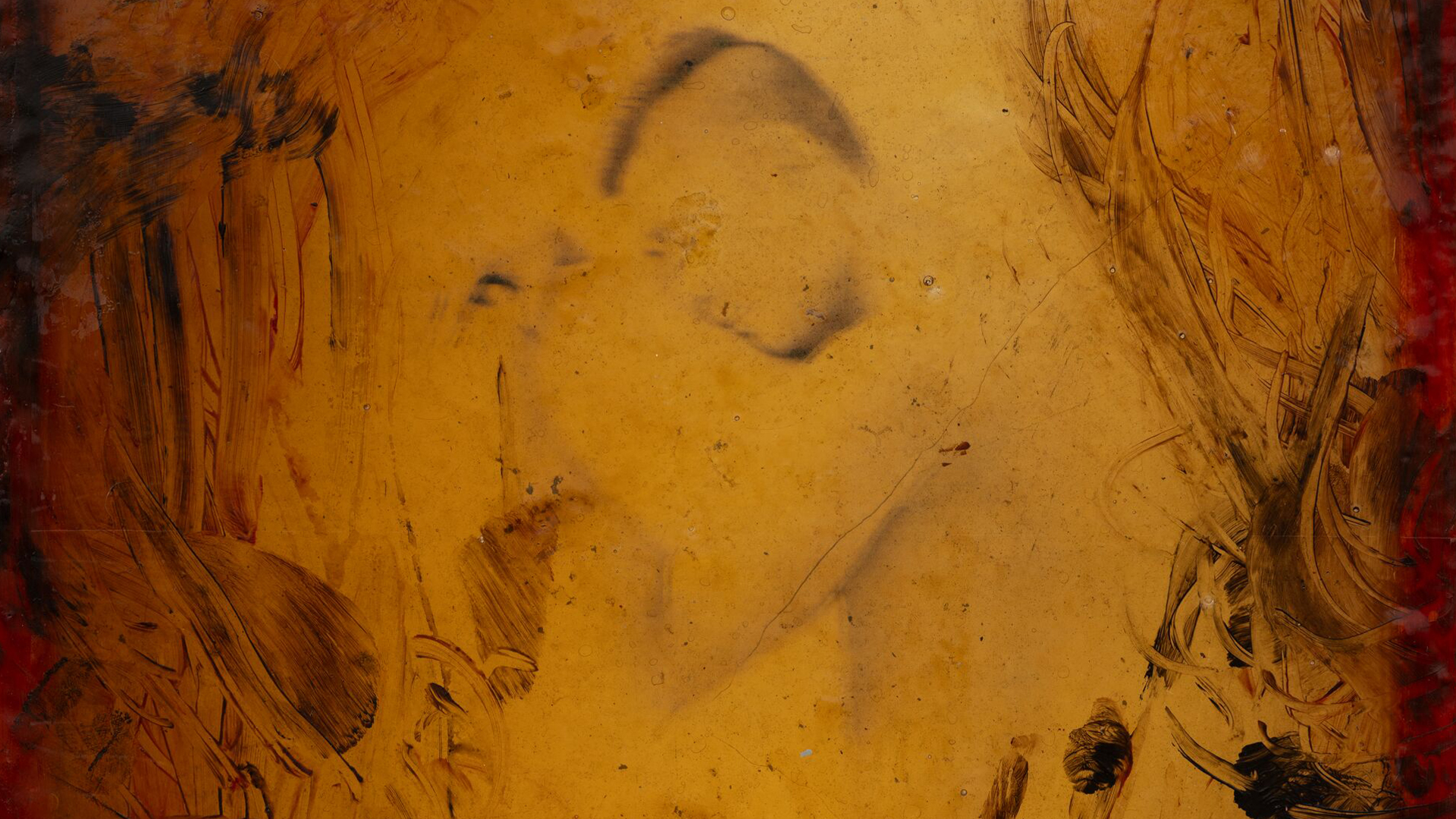
Portrait of Doryun Chong, Takesada Matsutani in the studio, 2019 ©️ Takesada Matsutani, Photo: Michel Lunardelli, Portrait of Aaina Bhargava
‘Gutai art does not change the material but brings it to life.’ — Gutai Manifesto
On the occasion of Takesada Matsutani’s first solo exhibition in Hong Kong, we are thrilled to host a live virtual conversation on the Gutai Movement with M+ Deputy Director and Chief Curator Doryun Chong and Art & Culture Journalist Aaina Bhargava. The discussion will reflect on Gutai and its influence and legacy, as well as the artist’s new exhibition of mixed-media paintings—made mostly during quarantine—works on paper, assemblages and an important site-specific installation from the artist’s archive.
Takesada Matsutani will share his personal insights on Gutai and his practice since the movement from his studio in Paris. As one of the most important Japanese artists still working today, Matsutani continues to demonstrate the spirit of Gutai throughout his practice.
Join us on Zoom on Saturday 23 January 7am GMT / 8am CET / 3pm HKT. Click here to register.
About Doryun Chong
Portrait of Doryun Chong
Doryun Chong is Deputy Director, Curatorial, and Chief Curator of M+, a new museum of visual culture that will open its Herzog & de Meuron–designed building in 2020, in Hong Kong’s West Kowloon Cultural District. Appointed as the inaugural Chief Curator in 2013, Chong oversees all curatorial activities and programmes, including acquisitions, exhibitions, learning and public programmes, and digital initiatives encompassing the museum’s three main disciplinary areas of design and architecture, moving image, and visual art. Some of the exhibitions he has curated or co-curated at M+ include Mobile M+: Live Art (2015), Tsang Kin-Wah: The Infinite Nothing, Hong Kong in Venice (2015), Samson Young: Songs for Disaster Relief World Tour (2018), and Noguchi for Danh Vo: Counterpoint (2018). Prior to joining M+, Chong worked in various curatorial capacities at the Walker Art Center in Minneapolis (2003–2009) and the Museum of Modern Art, New York (2009–2013).
About Aaina Bhargava
Portrait of Aaina Bhargava
Aaina Bhargava is an art and culture journalist based in Hong Kong. Most recently she worked at South China Morning Post, and prior to that as an editor at Cobo Social. With a background in art history, she specializes in contemporary art, and has extensive experience working for a range of art institutions. She has also contributed to art/design publications including Design Anthology, Artomity, and Asian Art News.
About Takesada Matsutani
Takesada Matsutani in the studio, 2019 ©️ Takesada Matsutani, Photo: Michel Lunardelli
From the early 1960s until the 1970s Takesada Matsutani was a key member of the influential post war Japanese art collective, the Gutai Art Association. Over five decades Matsutani has developed a unique visual language of form and materials. As part of the Gutai group, Matsutani experimented with vinyl glue, using fans and his own breath to manipulate the substance, creating bulbous and sensuous forms reminiscent of human curves and features.
Matsutani’s work is present in major public and private collections around the world including the Centre Pompidou in Paris, Tokyo Museum of Contemporary Art, the Victoria & Albert Museum in London, the Dallas Museum of Art, the Minneapolis Institute of Art, the Guggenheim Abu Dhabi, and the Long Museum in Shanghai among many others.
About the Exhibition
Installation View, ‘Takesada Matsutani’, Hauser & Wirth Hong Kong, 2020 © Takesada Matsutani. Photo: Kitmin Lee
For six decades the Osaka-born, Paris-based artist Takesada Matsutani has developed a unique visual language of form and materials. Organized with Olivier Renaud-Clément, the artist’s first solo exhibition in Hong Kong from 29 October 2020 to 11 February 2021 includes new mixed-media paintings, works on paper, assemblages and an important site-specific installation from the artist’s archive.
From the early 1960s until the 1970s Matsutani was a key member of the influential post-war Japanese art collective, the Gutai Art Association. As part of the group, Matsutani experimented with vinyl glue, using fans and his own breath to manipulate the substance, creating bulbous and sensuous forms. By working closely with the material, this approach embodied an important aspect of Gutai: letting material and spirit work in conjunction with one another to create something new.
Decades have passed and Matsutani continues to be inspired by the tactility of vinyl glue, although today his method places more emphasis on the meditative and methodical. While he doesn’t consider himself a Zen practitioner in his art, he has felt a profound affinity with the philosophy’s call for a ‘return to the simplicity of everyday experience’; its rejection of ‘system-based thinking’; and its emphasis on ‘a constant moment-to-moment praxis’. In his multifaceted works, Matsutani attempts to stop time, to materialize a suspended moment, and acknowledge the repetition and fluidity of everyday life.
UPCOMING EVENTS
1 / 4



